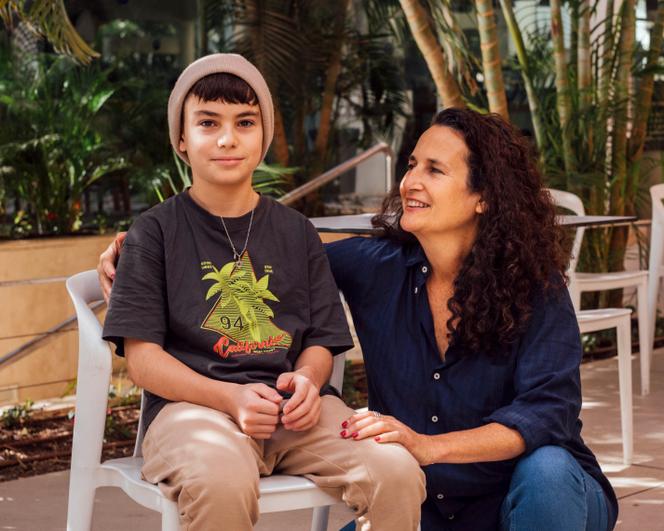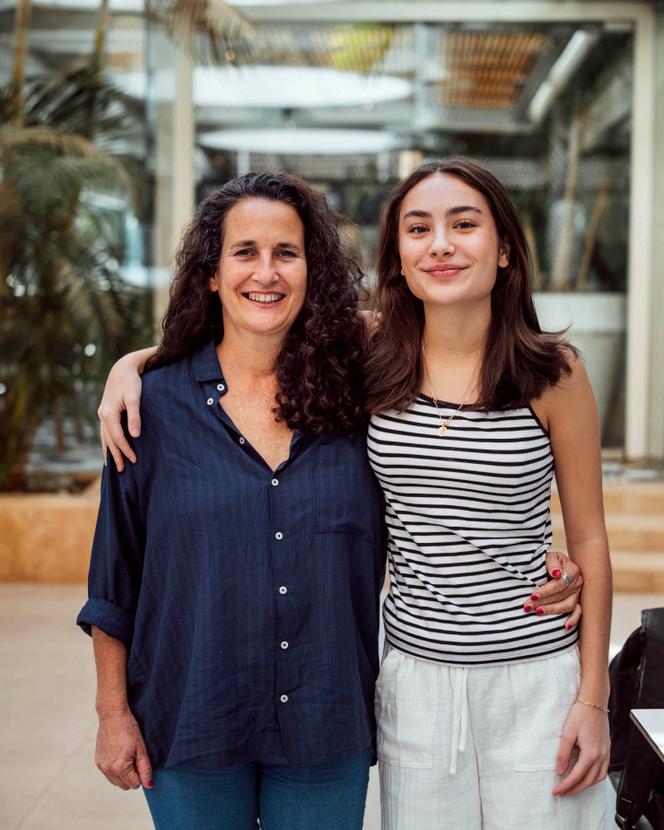


The morning's silence on December 9 was barely interrupted by the breeze blowing through the palm trees. The pale light softened the contours of the raw landscape of rock and sand visible behind the walls of a hotel in Eilat, on the Israeli-Egyptian border, where the Negev ends and the Sinai begins. Many residents of the Nir Oz kibbutz have stayed here, on the shores of the Red Sea. Located next to Gaza, the community has the highest number of people taken hostage – 68, from a village of no more than 400 residents.
"I arrived here just after the attack on Nir Oz. Then I left for Tel Aviv to fight for my children's return. Now that they're back, I wanted them to see this beauty," said Hadas Kalderon, while Sahar, 16, and Erez, 12, were still asleep. The two teenagers were released during the truce between Israel and Hamas, which ended on December 1.
In all, 37 of the 110 hostages released in exchange for Palestinian prisoners came from Nir Oz. It was an agonizing wait that began on the morning of October 7, before their release. The 56-year-old French-Israeli detailed the process in an interview with Le Monde, without going into detail to protect the safety of the hostages still in the hands of the Islamic organization – 133 officially confirmed, including 31 from Nir Oz, dead or alive.
On October 7, Hadas was in one house and her two youngest children in another with their father, Ofer. The last message she received from him was: "I'm with the children. We've jumped out of the window and hidden in the bushes." For two months, she had wondered why they hadn't stayed in the safe room. "The door didn't close properly. The terrorists were throwing grenades. They preferred to flee outside, just until it passed," said Hadas, whose children explained what happened to them to her.
From their hiding place, they saw the security fence of their kibbutz smashed and hundreds of people pouring inside: "Terrorists, civilians, young people... And the pogrom began. They saw the corpses of people they knew lying around, heard explosions, gunfire, screams." The children still haven't told the whole story. But for Hadas, their feeling of safety disappeared from that moment on.

They were then taken to Gaza and led into a tunnel built by Hamas. "They didn't see the sun for two months. Sometimes they ate well, sometimes badly. On several occasions, they had to make do with one loaf of bread a day." Sahar and Erez were not kept informed of anything, at least at the beginning of their detention. They received news gradually. "But their jailers lied to them, manipulated them... And the children didn't know when it would end." From the outside, they could hear the noise of war raging above their heads. They could hear bombs falling. "It was like Fortnite," the shooting video game, they told their mother.
You have 60% of this article left to read. The rest is for subscribers only.
